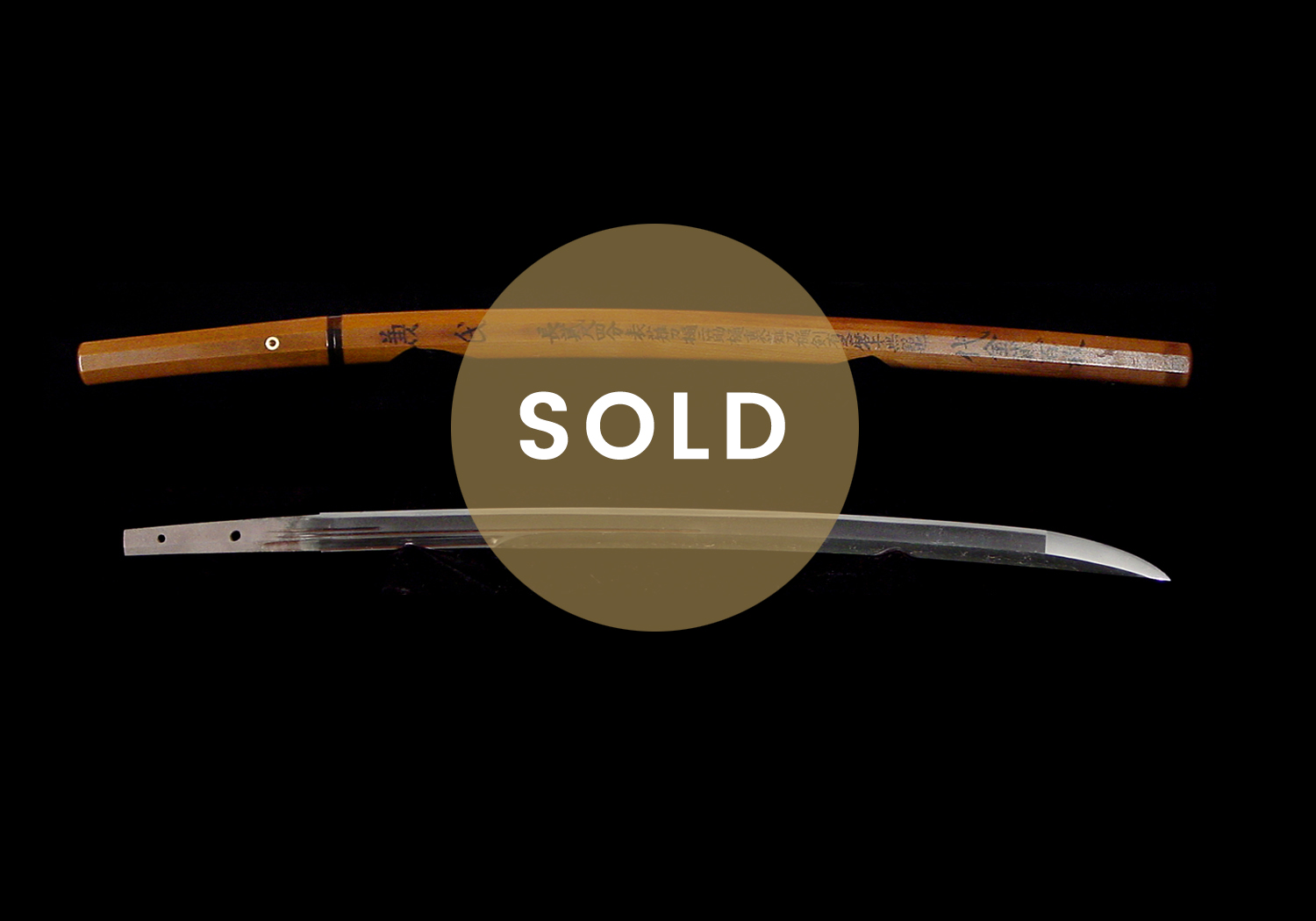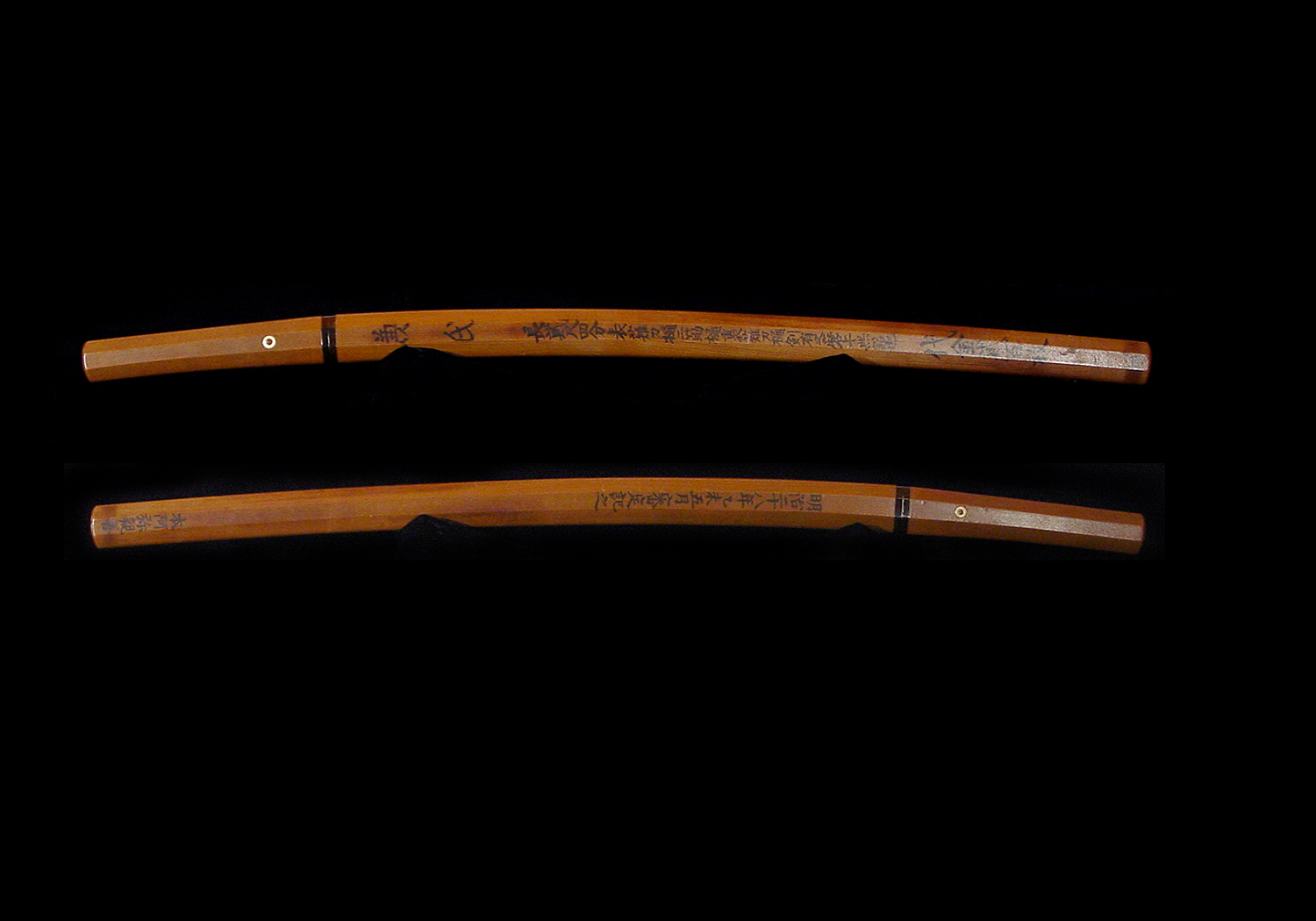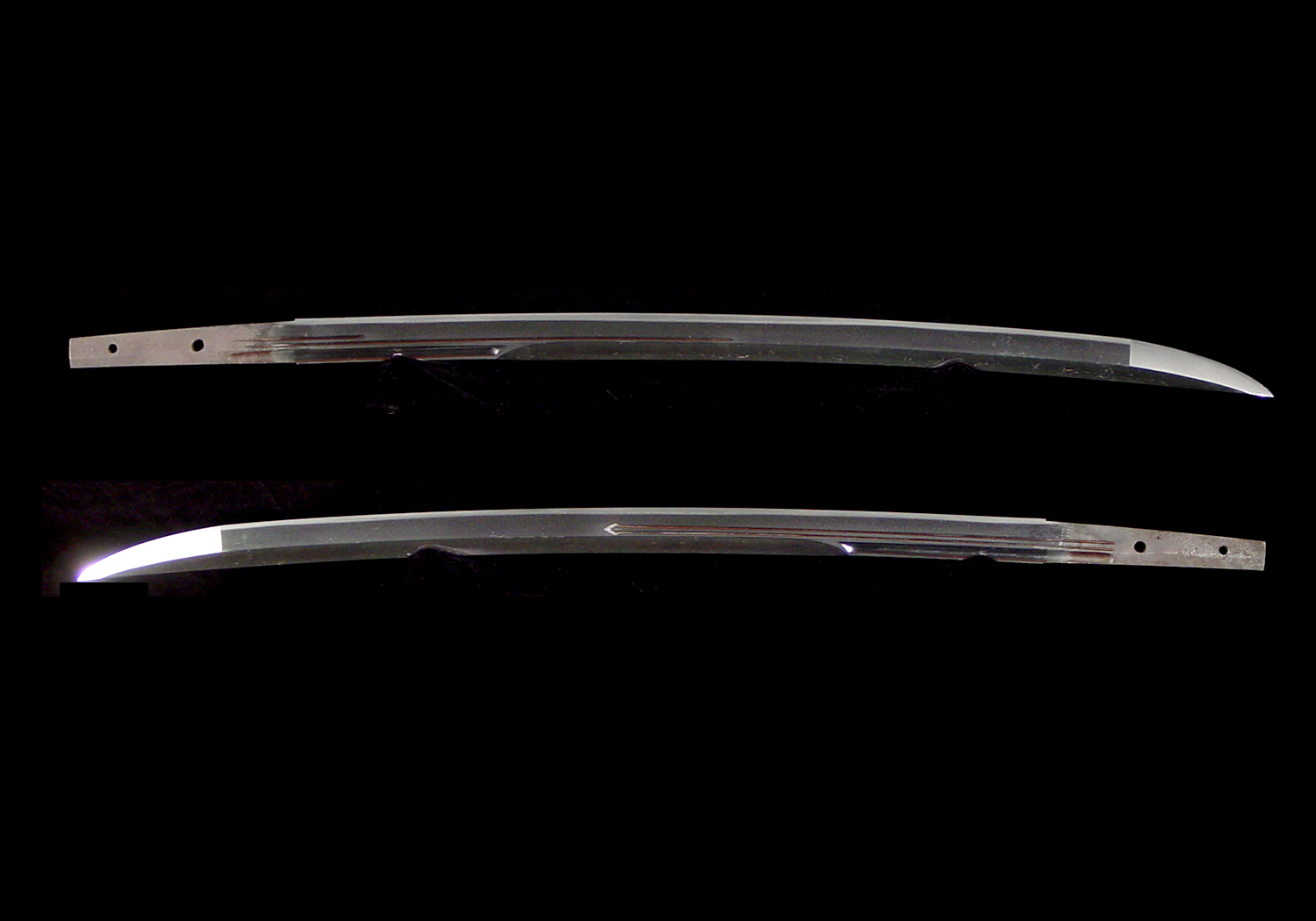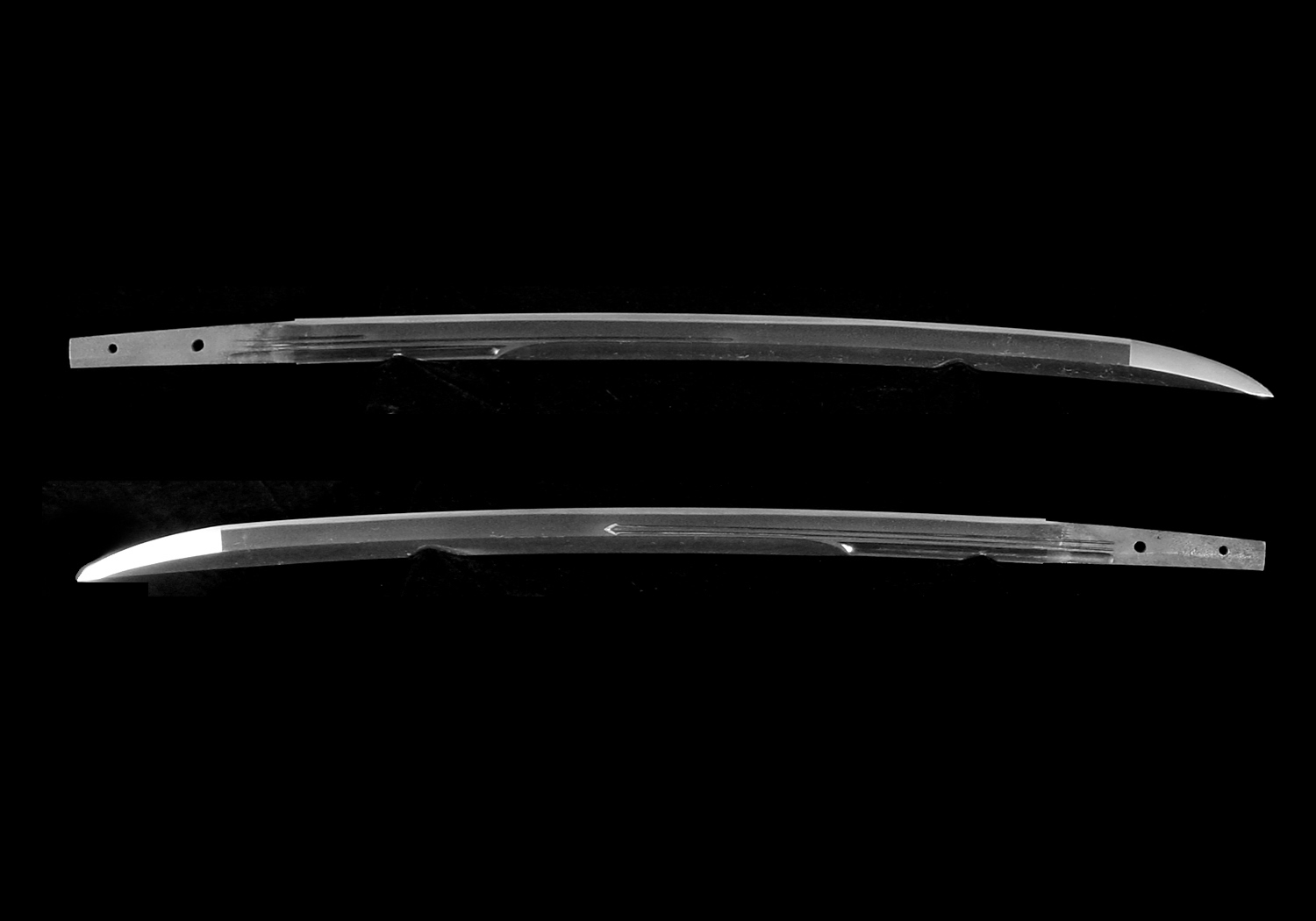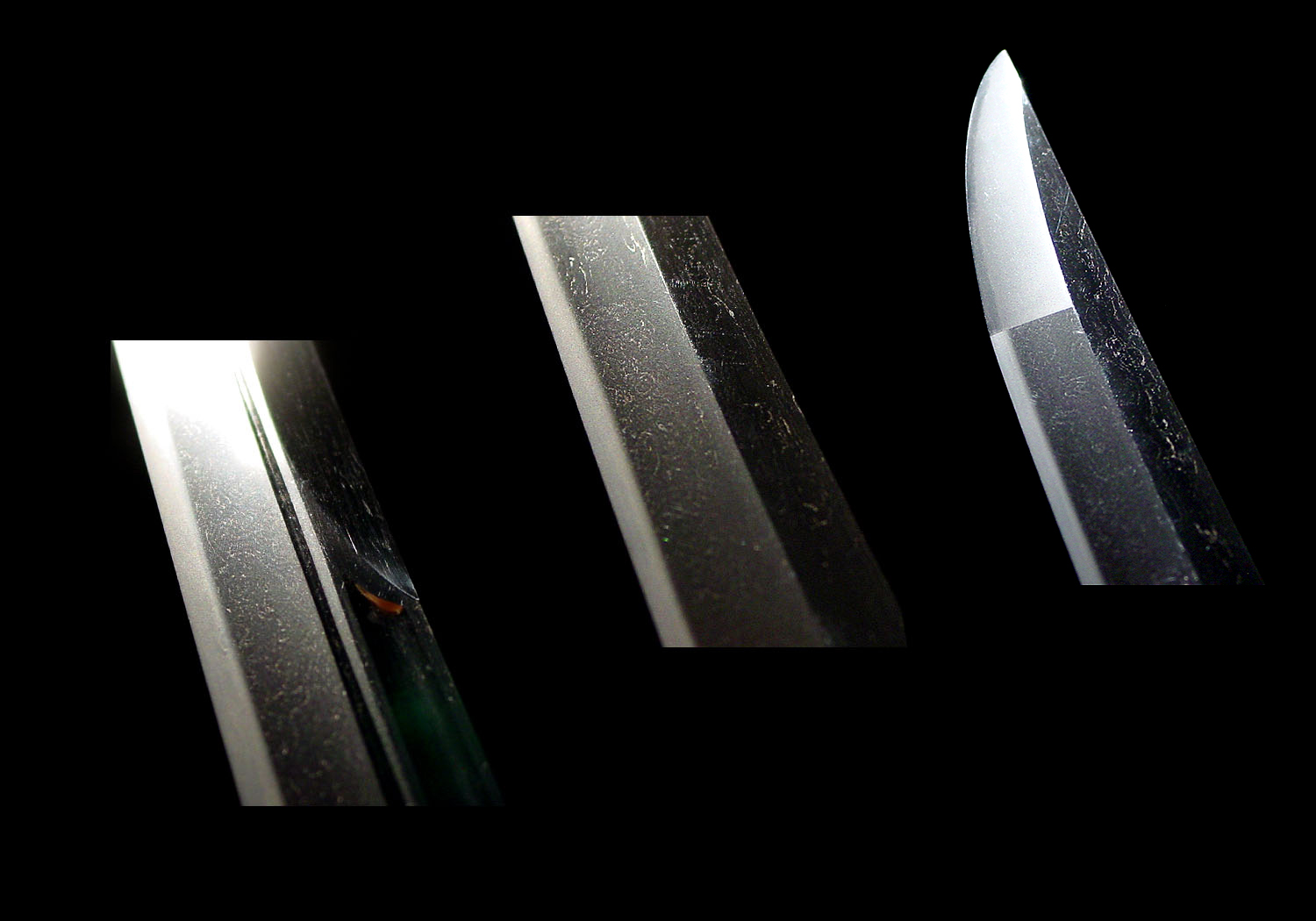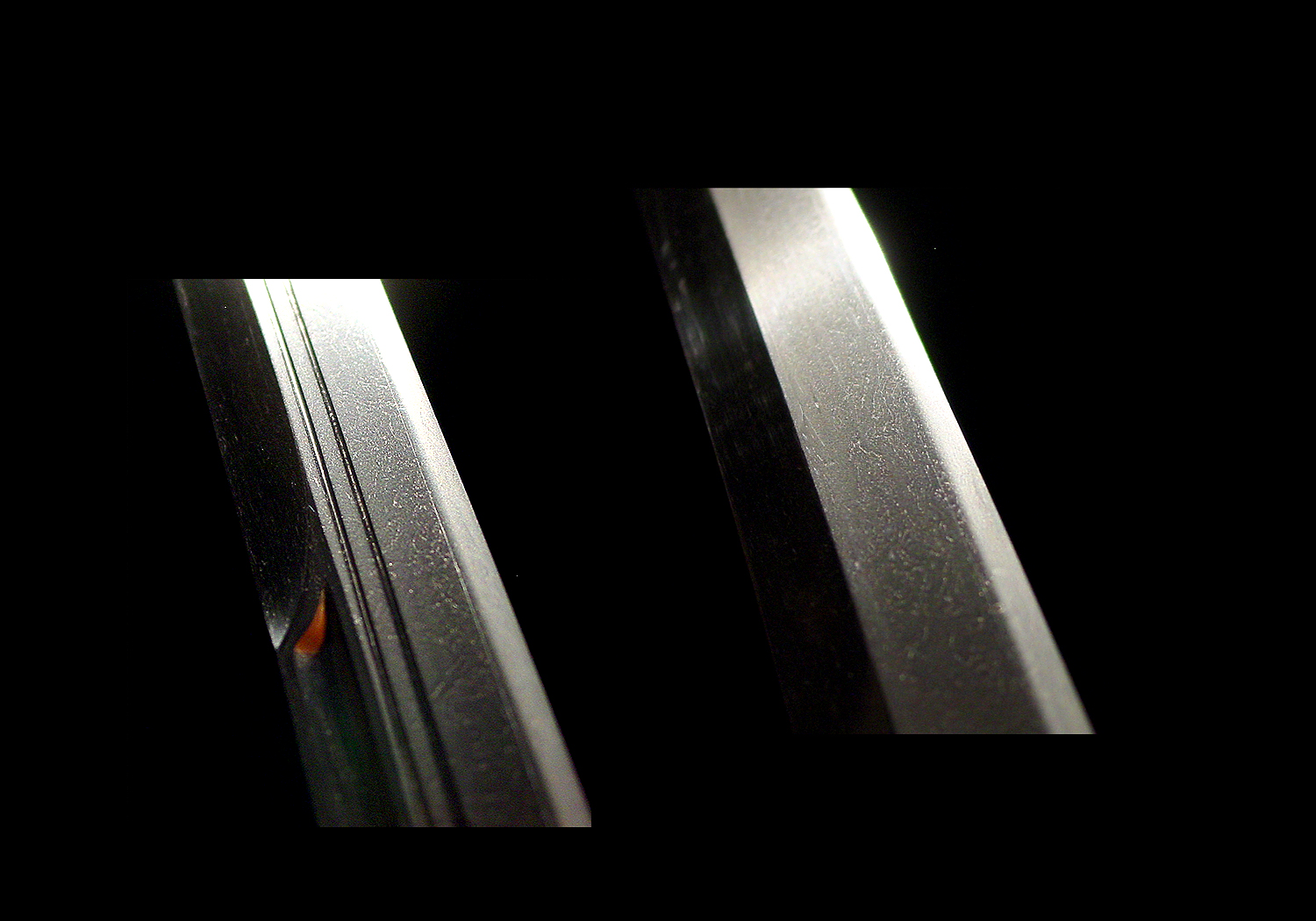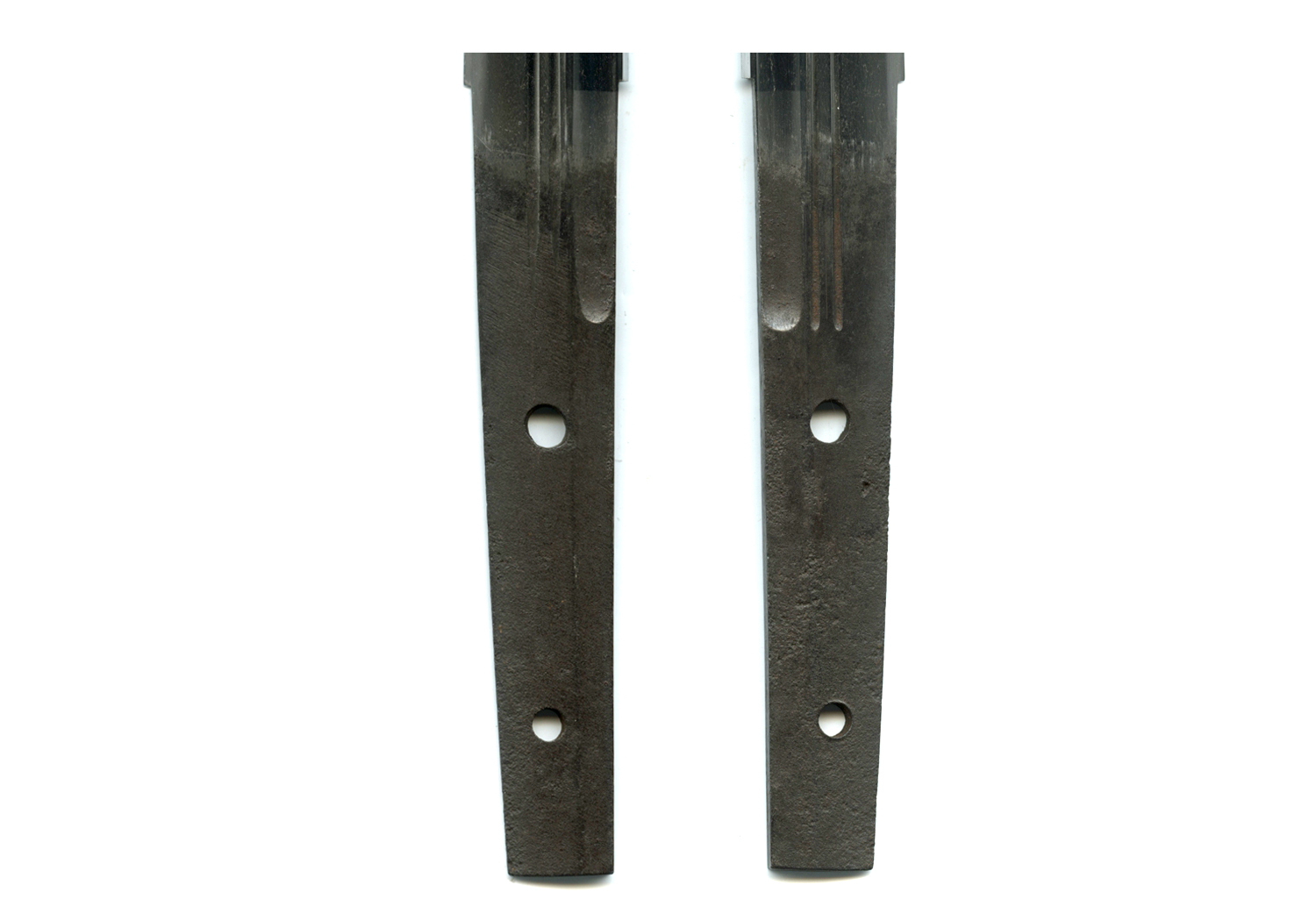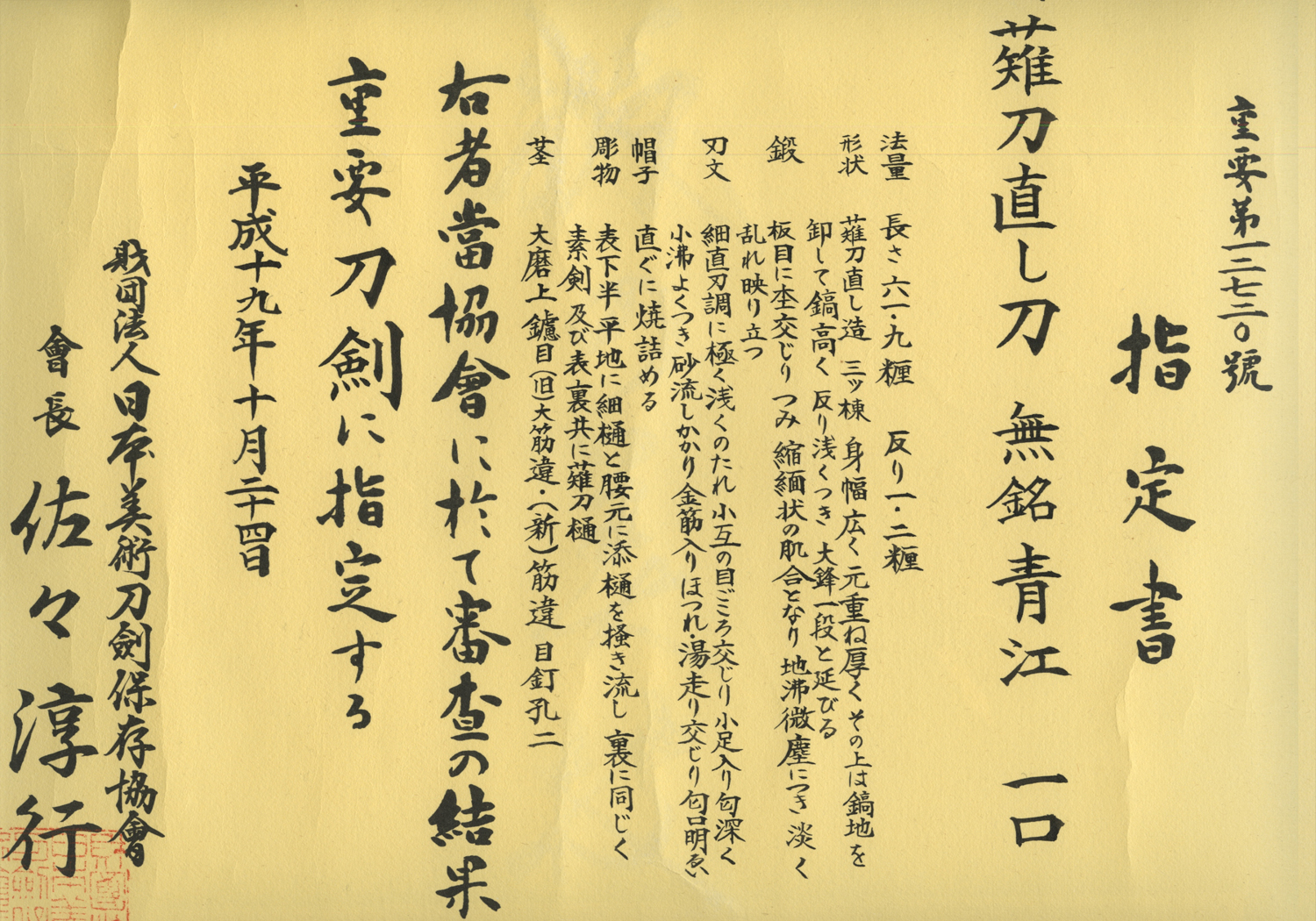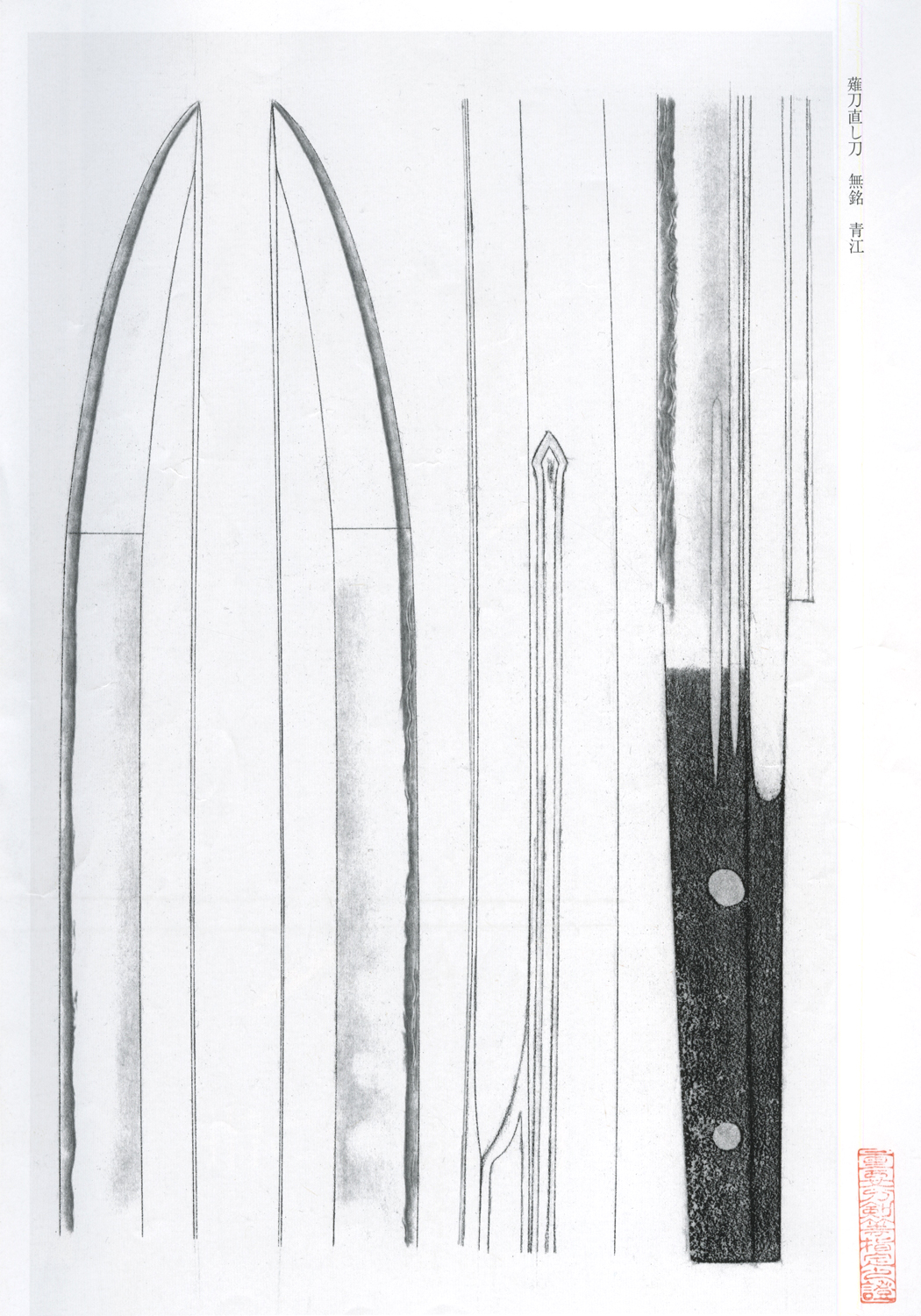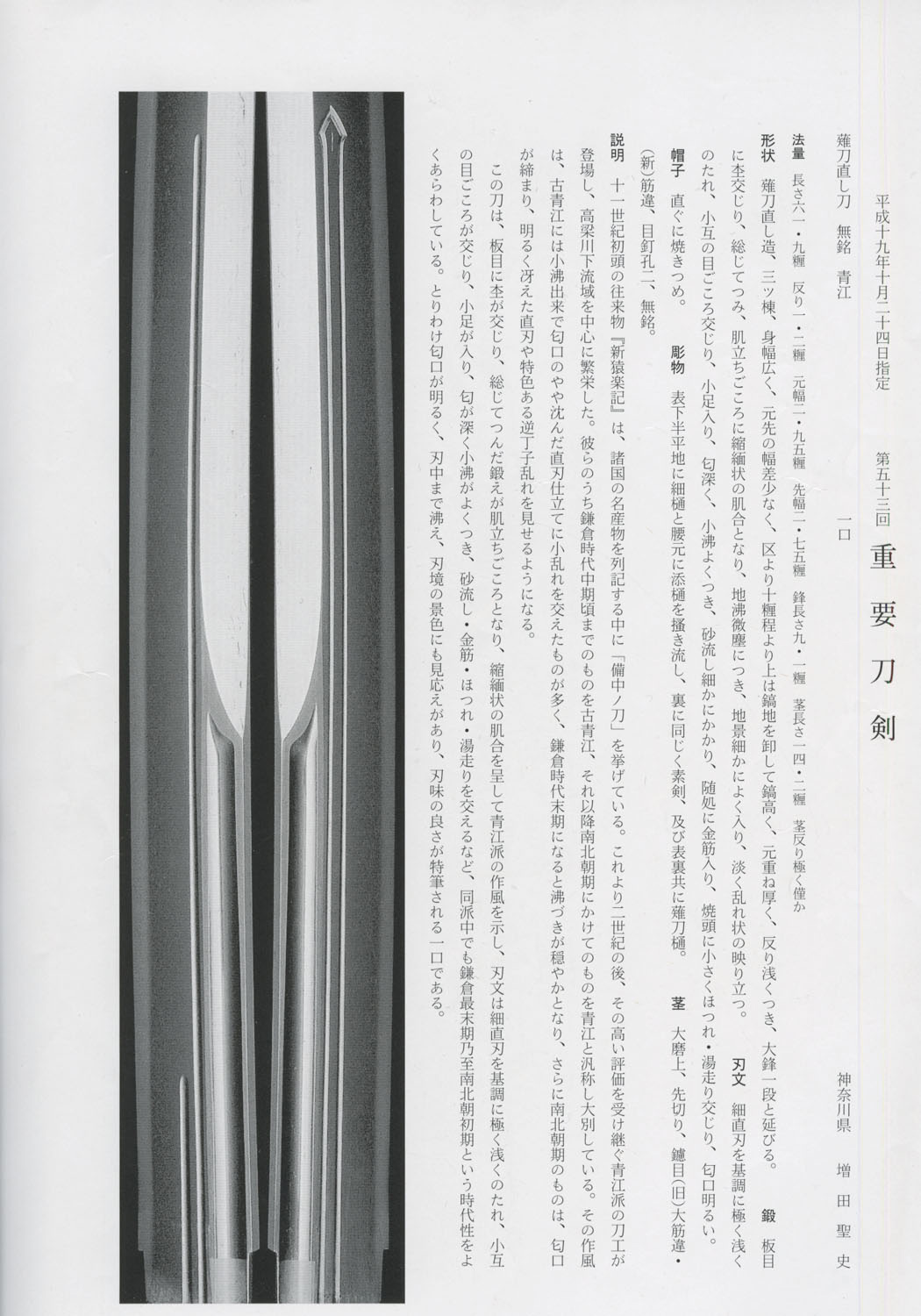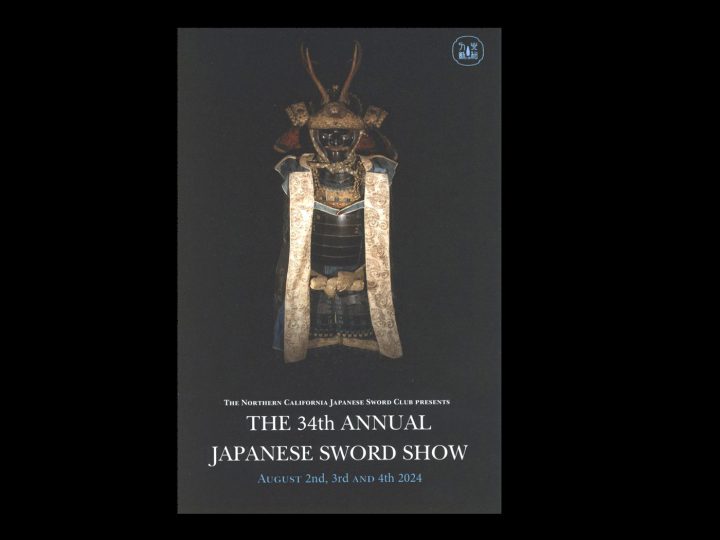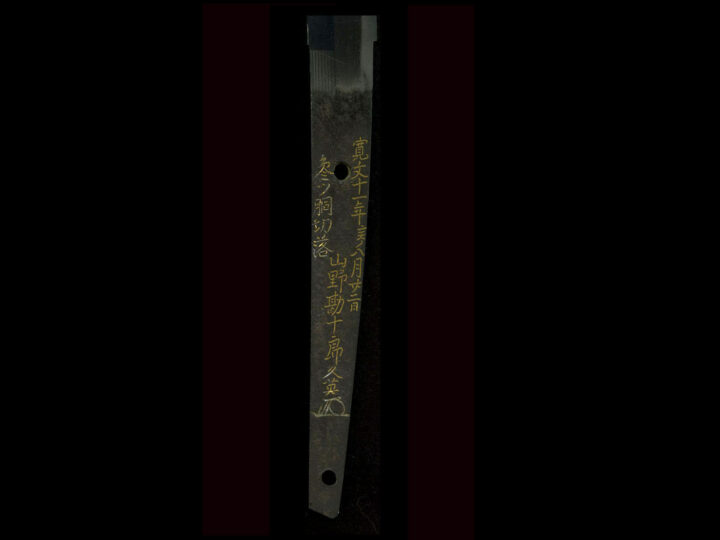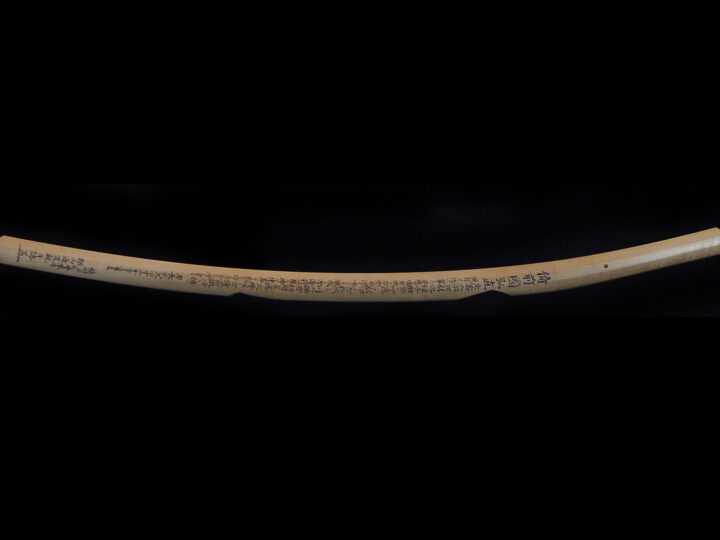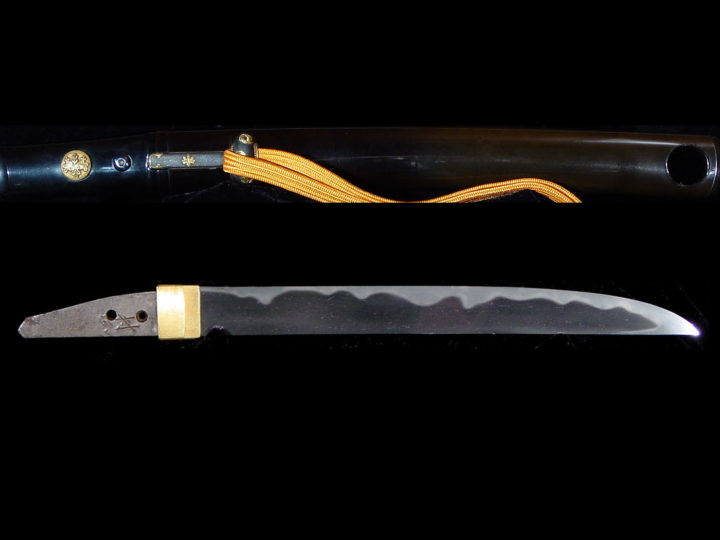
I am pleased to present this Jûyô Tôken naginata-naoshi katana by the Bitchû Aoe school of the late Kamakura era to the early Nanbokuchô era. The following is a translation of the Jûyô zufu describing this sword.
Designated Jûyô Tôken at the 53rdshinsa held on the 24thof October 2007.
Naginata-naoshi, Unsigned; Aoe (青江).
Measurements:Length: 61.9 cent.; Curvature: 1.2 cent; Width at the Base: 2.95 cent.; Width at the Tip: 2.75 cent.; Kissaki Length: 9.1 cent.; Nakago Length: 14.2 cent.; Nakago Curvature: extremely slight.
The construction is naginata-naoshi-zukuri with a mitsu-mune. The blade is wide, and there is little difference between the width at the base and the width at the point. Rather than at the machi, from about 10 centimeters up the blade, the shinogi-ji is tapered and the shinogi is high. The blade is thick at the base, and the curvature is shallow. The ô-kissaki is very long. The kitae is itame mixed with mokume that is entirely tight with a slightly prominent hada pattern, and there is a mixing in of chirimen shaped hada. The jigane is covered in fine ji-nie, there is minute chikei activity, and it contains whitish and prominent midare shaped utsuri. The hamon is essentially a narrow suguha that has a mixing in of extremely shallow notare and a hint of ko-gunome. There is ko-ashi activity, the nioi in the habuchi is thick and the habuchi is well covered in ko-nie with minute streaks of sunagashi. There is kinsuji activity everywhere, and small hotsure at the top of the tempering with a mixing in of yubashiri. The nioiguchi is bright. The bôshi is sugu and yakizume. On the omote lower half of the blade in the hira-ji is carved a narrow groove with a soe-bi at the base of the koshi, and on the ura in the same area is a suken. There are naginata-hi carved on both sides of the blade. The nakago is ô-suriage with a kiri tip. The yasuri-me (original) are ô-sujikai and sujikai (new), and there are two mekugi-ana. The blade is unsigned.
Description: In the early 11thcentury book Shin-Sarugaku-ki(New Record of Humorous Plays, sarugaku was a Heian period prototype for Kyogen), among the special products of various provinces that are enumerated, the “swords of Bitchû” are included. From that time until two hundred years later, this high evaluation of the Aoe School sword-smiths continued, and they prospered centered in the lower basin of the Takahashi-gawa river. Within this school, those works dating until the middle of the Kamakura period are designated Ko-Aoe, and those dating from this time onward until the Nambokuchô period are designated Aoe, providing a major division in the school’s designations. As for their styles of workmanship, the Ko-Aoe largely produced a ko-nie based sugu hamon with a mixing in of ko-midare and a somewhat subdued nioiguchi. When we get to the late Kamakura period, the nie covering becomes rather quiet, and, moreover, the works of the Nambokuchô period have a tight nioiguchi, and a bright and vivid suguha is characteristic with slanted chôji-midare also seen.
This katana has a kitae of itame mixed with mokume that is entirely tight with a slightly prominent hada pattern. There is the mixing in of chirimen shape hada, which displays the Aoe School style of workmanship. The hamon is essentially a narrow suguha mixed with extremely shallow notare and a hint of ko-gunome. There is ko-ashi activity, and the nioi covering in the habuchi is thick, and the habuchi is well covered in ko-nie. There is a mixing in of such activity as streaks of sunagashi, kinsuji, hotsure and yubashiri. Among the works in this same school, this blade displays the characteristics of the very late Kamakura period or early Nambokuchô period. In particular, the nioiguchi is bright, the nie covering extends into the ha, and even the appearance of the edge of the ha is impressive. It is a piece in which the excellence of its cutting ability deserves special mention.
You will note that this blade comes in an old shirasaya. The sayagaki was written by one of the Honami family in Meiji 28 (1895). Even though he attributes this blade to Kaneuji, it is still precious and worthy of preservation. He also gives this blade a value of one hundred large gold pieces (Oban). For further information about the Bitchû Aoe School of sword making, please refer to the following article, The Bitchû Aoe School.
PRICE:SOLD

